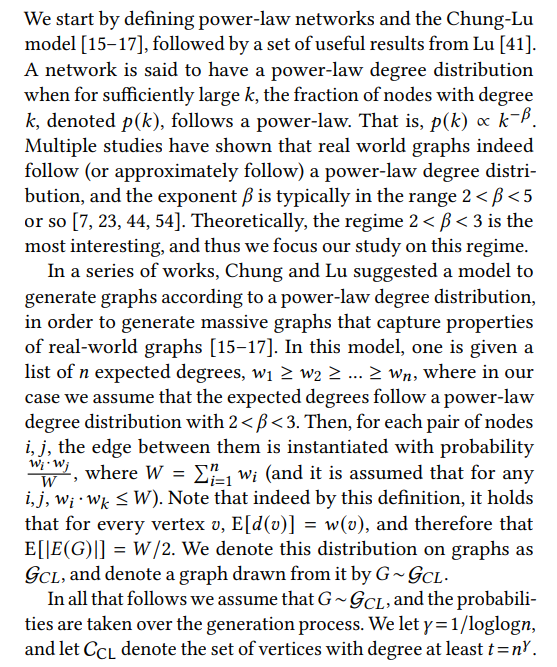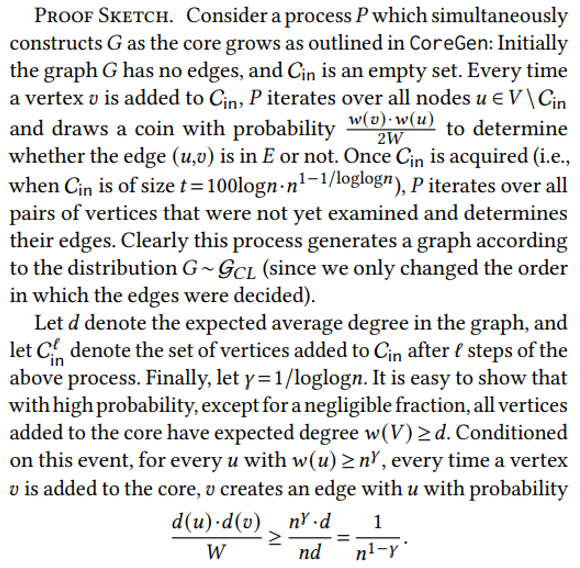Table of Links
-
Algorithm
-
Theoretical Analysis
-
5.1 WormHole𝐸, WormHole𝐻 and BiBFS
4 THEORETICAL ANALYSIS
It is a relatively standard observation that many social networks exhibit, at least approximately, a power-law degree distribution (see, e.g., [9] and the many references within). The Chung-Lu model [41] is a commonly studied random graph model which admits such degree distribution.
In this section we provide a proof-of-concept for the correctness of WormHole on Chung-Lu random graphs, aiming to explain the good performance in practice through the study of a popular theoretical model. We sometimes only include proof sketches instead of full proofs, in the interest of saving space.
4.1 Preliminaries

Theorem 4.1 (Theorem 4 in [16]). Suppose a power law random graph with exponent 2 log𝑛/log log𝑛. Then almost surely the diameter is Θ(log𝑛), the diameter of the CCL core is 𝑂(loglog𝑛) and almost all vertices are within distance𝑂(loglog𝑛) to CCL.
**Claim 4.2 (**Fact 2 in [15]). With probability at least 1−1/𝑛, for all vertices𝑣 ∈𝑉 such that𝑤(𝑣) ≥10logn

and for all vertices with𝑤(𝑣) ≤10log𝑛, 𝑑 (𝑣) ≤20log𝑛.
4.2 Sublinearity of Inner Ring



:::info
Authors:
(1) Talya Eden, Bar-Ilan University (talyaa01@gmail.com);
(2) Omri Ben-Eliezer, MIT (omrib@mit.edu);
(3) C. Seshadhri, UC Santa Cruz (sesh@ucsc.edu).
:::
:::info
This paper is available on arxiv under CC BY 4.0 license.
:::